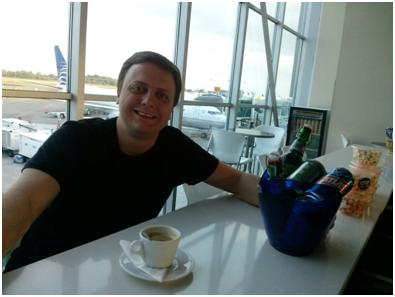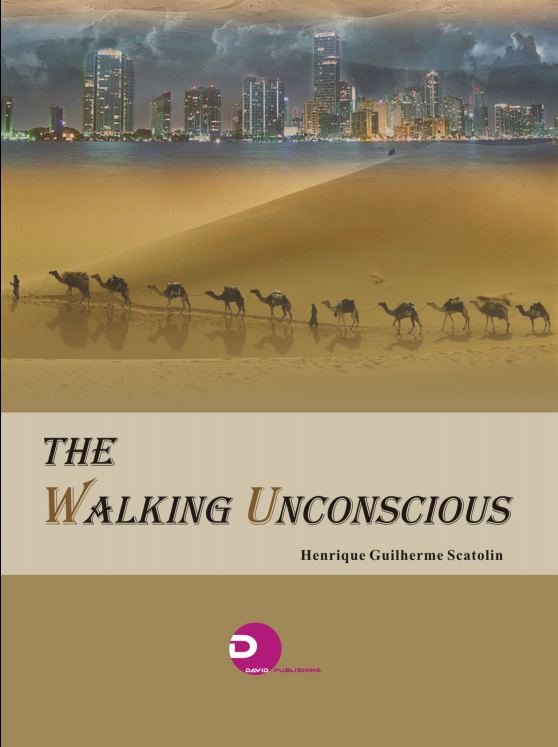BookS
Author(s): Henrique Guilherme Scatolin
0pp 0
0pp 0
- ISBN: (Ebook) 1-934502-13-8 USD $60.00
- ISBN: ( Print) 1-934502-13-8 USD $80.00
Description
Author Information
In the comings and goings, the title The Walking Unconscious alludes to the plurality of the unconscious manifestations that this book attempts to comprise, from the female subjectivity conception to the contributions of contemporary psychoanalysts. The unconscious needs to walk vby the impulses and the desire to achieve a joy that is not always sublime, but which alludes to the dosages of childish pleasures never before abandoned. It is this dose of pleasure that this reading aims to provide, through the lapse and associations that psychoanalysis provides to a reader who still, and unfortunately, is focused on the divan. Therefore, The Walking Unconscious is a point of arrival in which the subjectivity gains a new contour based on the Freudian work and his followers reading, such as Piera Aulagnier, Paul Schilder, and Karl Abraham.
This book starts with a resumption of the femininity concept, which, starting from the penis envy concept, seeks to focus all the old infantile desire displacement within the femininity reach, as one of the possible exits of the Oedipus complex. And leaving this issue of the desire of desire or the non-desire, this refers to the work of Paul Schilder, emphasizing the body image formation, extolling how the pre-genital and infant genital phases are crucial for its understanding. The image of today is the result of an image already incorporated in the relationship between the mother and the baby; but as this is incorporated, and the way the pulsatory impulses are formulated are decisive for this image constitution. So, this book seeks to resume its formation and possible distortions, highlighting the incorporation and projection mechanisms for its constitution.
Taking advantage of the Freudian theory context and metapsychology, this book also brings two studies of clinical cases: the first titled as “the Knives Man” and the second as “the clinical case of Paulo”. But what is singular in these cases?
The Knives Man presented an unusual ritual: the knives, needles, and other objects hiding in his house. What would be at the root of this ritual? What did this patient want to express in his symptoms? So, this study investigates the obsessional neurosis richness, a pathology that is resumed throughout this book by means of contemporary reflections, where the symptomatic positivity issue of this neurosis is highlighted, establishing a wide reflection based on the symptomatic relationship of this psychopathology, differentiating it from the obsessive compulsive disorder. On the pillars and roots of this neurosis, the doubt and guilt richness is explored in the clinical case of Paulo, distinguishing the relevance of the identificatory problem for understanding these two obsessional symptoms. So, based on the uniqueness of the clinical case of Paulo, the ambivalences and the identificatory building is pointed out for understanding its symptomatology.
In the meanders of the reflections present in this book, by another optics, the book establishes a counterpoint with hysteria. Is this neurosis outdated? Or is it camouflaged in our current society? This is issue that many of these reflections are intended to respond, establishing a dialogue with the life impulse so present in its etiology.
In this walking, where the unconscious creates symbolic feet and abstract bodies, this book also makes use of Karl Abraham and Piera Aulagnier contributions. If Abraham opened the doors to a new understanding of melancholy and psychosis, influencing the whole English school (primarily the Klenians), Aulagnier, in the French school, brings from Jacques Lacan a vision of psychopathology from the identificatory building. Thus, to understand the contributions of both, a resumption of their main postulates becomes the guiding axis for understanding many psychopathologies; but what is unique in each of these psychoanalysts, only a unique reading of this book can answer.
Therefore, through this multi-faceted plurality, this book seeks to break the old dilemma that psychoanalysis is an outdated science. In my understanding, it has never been so present in our context, but the blindness caused by the empirical search for instant results placed it in an area never before assigned, a space in which the anguish needs to be opened and the unconscious put into action: that is why the title of The Walking Unconscious. The unconscious needs to walk through the other sciences: It has always been present, in latent state, but its own legs were never given. These symbolic legs are what allow a reflection that will lead the reader to a walking since the female subjectivity constitution to the obsessions clinic, passing by the hysteria, the body image and contemporary reflections. Let us read it!!!
This book starts with a resumption of the femininity concept, which, starting from the penis envy concept, seeks to focus all the old infantile desire displacement within the femininity reach, as one of the possible exits of the Oedipus complex. And leaving this issue of the desire of desire or the non-desire, this refers to the work of Paul Schilder, emphasizing the body image formation, extolling how the pre-genital and infant genital phases are crucial for its understanding. The image of today is the result of an image already incorporated in the relationship between the mother and the baby; but as this is incorporated, and the way the pulsatory impulses are formulated are decisive for this image constitution. So, this book seeks to resume its formation and possible distortions, highlighting the incorporation and projection mechanisms for its constitution.
Taking advantage of the Freudian theory context and metapsychology, this book also brings two studies of clinical cases: the first titled as “the Knives Man” and the second as “the clinical case of Paulo”. But what is singular in these cases?
The Knives Man presented an unusual ritual: the knives, needles, and other objects hiding in his house. What would be at the root of this ritual? What did this patient want to express in his symptoms? So, this study investigates the obsessional neurosis richness, a pathology that is resumed throughout this book by means of contemporary reflections, where the symptomatic positivity issue of this neurosis is highlighted, establishing a wide reflection based on the symptomatic relationship of this psychopathology, differentiating it from the obsessive compulsive disorder. On the pillars and roots of this neurosis, the doubt and guilt richness is explored in the clinical case of Paulo, distinguishing the relevance of the identificatory problem for understanding these two obsessional symptoms. So, based on the uniqueness of the clinical case of Paulo, the ambivalences and the identificatory building is pointed out for understanding its symptomatology.
In the meanders of the reflections present in this book, by another optics, the book establishes a counterpoint with hysteria. Is this neurosis outdated? Or is it camouflaged in our current society? This is issue that many of these reflections are intended to respond, establishing a dialogue with the life impulse so present in its etiology.
In this walking, where the unconscious creates symbolic feet and abstract bodies, this book also makes use of Karl Abraham and Piera Aulagnier contributions. If Abraham opened the doors to a new understanding of melancholy and psychosis, influencing the whole English school (primarily the Klenians), Aulagnier, in the French school, brings from Jacques Lacan a vision of psychopathology from the identificatory building. Thus, to understand the contributions of both, a resumption of their main postulates becomes the guiding axis for understanding many psychopathologies; but what is unique in each of these psychoanalysts, only a unique reading of this book can answer.
Therefore, through this multi-faceted plurality, this book seeks to break the old dilemma that psychoanalysis is an outdated science. In my understanding, it has never been so present in our context, but the blindness caused by the empirical search for instant results placed it in an area never before assigned, a space in which the anguish needs to be opened and the unconscious put into action: that is why the title of The Walking Unconscious. The unconscious needs to walk through the other sciences: It has always been present, in latent state, but its own legs were never given. These symbolic legs are what allow a reflection that will lead the reader to a walking since the female subjectivity constitution to the obsessions clinic, passing by the hysteria, the body image and contemporary reflections. Let us read it!!!

Biography
Henrique Guilherme Scatolin
Holds a Bachelor’s degree in Psychology from the Methodist University of Piracicaba, a Master’s degree and a Ph.D. in Clinical Psychology from the Pontifical Catholic University of São Paulo. He has been serving as a psychotherapist with focus on psychoanalysis for 08 years and as an organizational consultant for 07 years. His email is [email protected].
